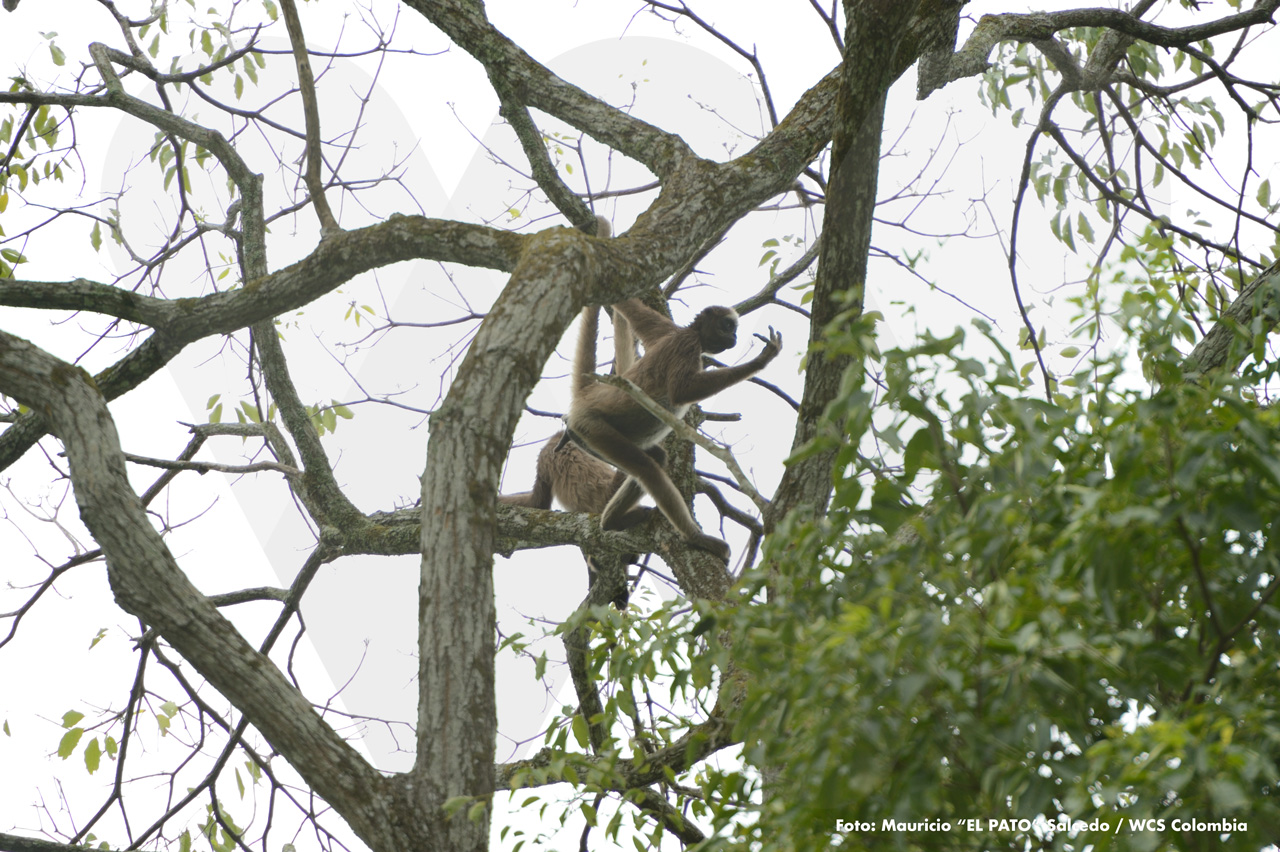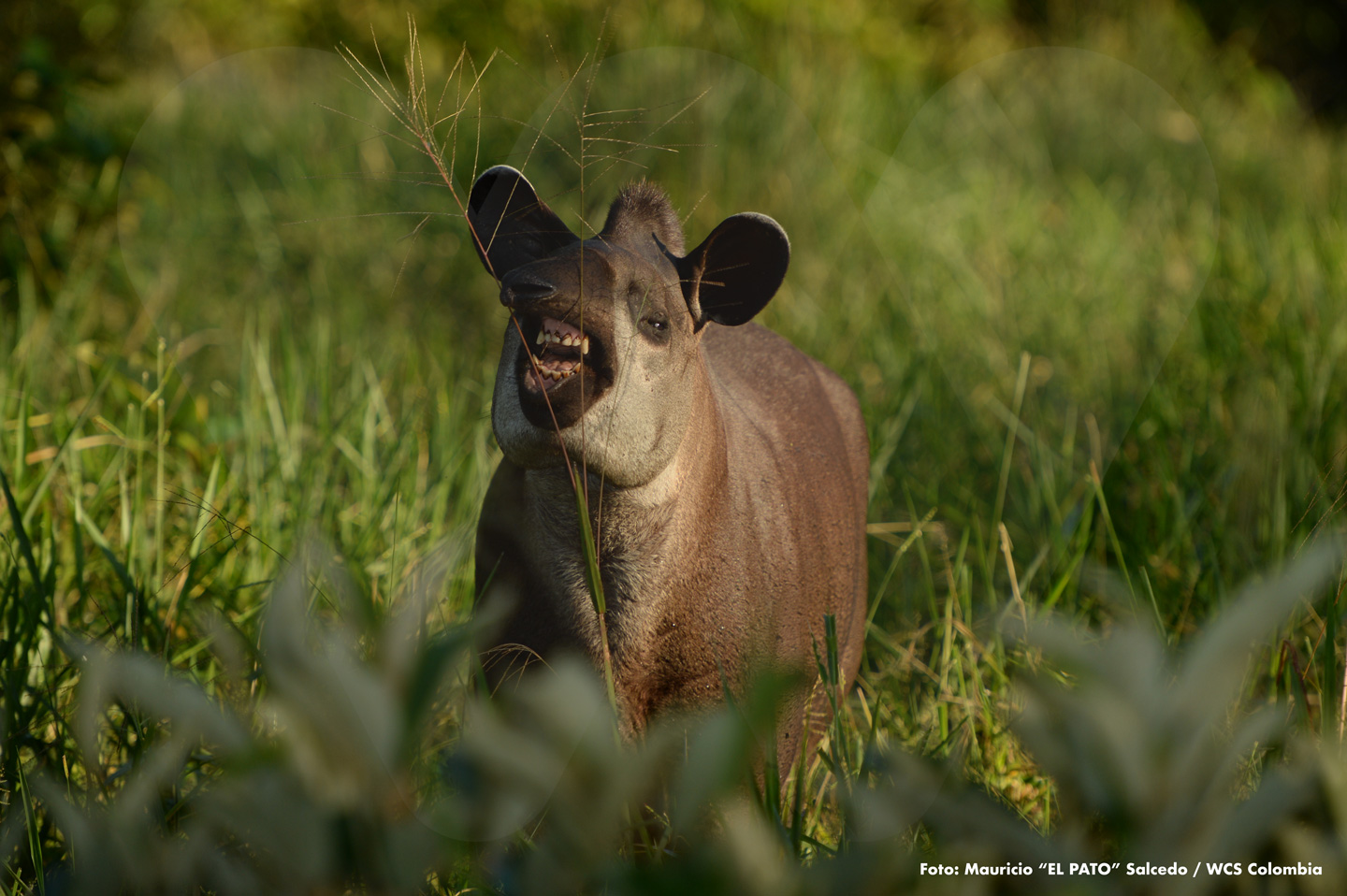An article published in the magazine of the Academia de Ciencias Exactas, Físicas y Naturales (Academy of Physics, Exact and Natural Sciences), based on the experience of Proyecto Vida Silvestre (PVS) (Project Wildlife), concludes that conservation work with a certain group of important species redounds in the welfare of others.

Species-addressed conservation programs are a common way to deal with biodiversity loss and it is usually thought that, in order to face the challenge of preserving a group of animals in a particular ecosystem, work with each one of those groups and the attainment of individual progress in their care are necessary. This idea requires a very high investment in human and economic resources, rarely possible to obtain or maintain.
A partial solution would be to select landscape species (those that use vast and ecologically diverse areas and that usually have a significant impact on the function of the habitats) and work intensely in their conservation. With this, other individuals associated with the same natural landscape and structure, will also start to receive benefits and results in favor of their protection. This could be compared to a domino effect where the first piece, in this case where the actions in favor of the bigger animals are concentrated, topples over and moves the rest of the pieces that, little by little, will begin to cover the smaller animals with a blanket of defense and protection.
This last conclusion is the core idea of the article ‘Las especies paisaje como estrategia de conservación de la biodiversidad: evaluación cuantitativa de su efectividad’ (Landscape species as strategy for the conservation of biodiversity: quantitative evaluation of its effectiveness), recently published in the magazine of the Academia de Ciencias Exactas, Físicas y Naturales (Academy of Physics, Exact and Natural Sciences).
It was written by Germán Forero, scientific director of WCS Colombia; Carlos Saavedra, coordinator of Proyecto Vida Silvestre (PVS) (Project Wildlife) led by WCS Colombia, and Leonor Valenzuela, analysis and synthesis coordinator of this same initiative.

This conclusion was reached based on PVS’s progress in two main geographical areas and the analysis of the Blue-billed Curassow (Crax alberti) and the Brown Spider Monkey (Ateles hybridus), in the Magdalena Medio area and the Lowland tapir (Tapirus terrestris) in the Orinoco River region.
The effect of actions on the species was determined through an analysis of Information obtained from camera traps and rounds. And the effects of said actions of the same initiative on the loss of forest in Cimitarra and Puerto Parra (Santander), Yondó (Antioquia) and the Bita River basin (Vichada) were estimated, comparing deforestation rates in the areas intervened by the project with those in areas with an absence of actions. All this between the years 2015 and 2018.

Results proved that conservation actions based on landscape species and derived from adequate planning, have a positive effect on its populations (abundance estimated as occupation) and other biodiversity elements and that the strategy of environment conservation has adequate results in the measured ecosystem structure, in this case, through the reduction of deforestation.
The importance of community agreements
One way or another, conservation based on landscape species was always explained in theory but, with this publication, we have a real example of its effectiveness for some taxonomic groups (not all).

To make this possible, Germán Forero explains, the conservation agreements made with the owners of lands or farms in both geographical zones, have been crucial. These owners all participate in Proyecto Vida Silvestre (Project Wildlife) and allocate part of their land exclusively for the protection of natural resources, thus helping in the recovery of forests, wetlands and river courses. They contribute to the creation of biological corridors to benefit the transit of mammals.
From the beginning of the execution of Proyecto Vida Silvestre (Project Wildlife) until mid-2021, near 130 agreements had been signed with land owners (some of them are fishermen). With this, there are approximately 33.599 hectares of land destined for the protection of natural resources, 7.674 of which are forest areas.
“These agreements reduced deforestation and confirm that they have the potential to contribute to the maintenance of biodiversity. We must not disregard, however, that these better- conserved zones will requiere support and a continuous verification” comments Forero, who presented the conclusions of this project as part of the requirements for his admission as member of the Academia de Ciencias Exactas, Físicas y Naturales (Academy of Physics, Exact and Natural Sciences).
And in this sense, the study confirmed that, as a result of the agreements in Magdalena Medio, the presence of the Blue-billed Curassow and the Brown Spider Monkey increased due, probably, to a combination of reduced hunting and the protection and restoration of their habitats. These two species depend on a forest in good condition. “During the assessment period, they started to occupy spaces in the landscape preferably with an agreement, which indicated that the plan worked”, explains the study.

On the other hand, in the Orinoco region, where the proportion of area occupied by the Lowland tapir in the Bita River basin has always been high, the interventions did not produce any noticeable increase in its presence. Tapirs have maintained their good condition, with very low rates of extinction in the landscape. Conservation actions, therefore, have been oriented, with good expectations, towards the maintenance, rather than the recovery, of those populations.
“Somehow, we now know that in the Magdalena Medio we are healing the damage intensified in recent years, whereas in the Orinoco River Region we aim is to prevent that damage”, explains Leonor Valenzuela.
The methodology applied also revealed that other species of vertebrates (other than landscape species) benefited from conservation actions - the Central American Agouti (Dasyprocta punctata), the Lowland Paca (Cuniculus paca) and the Collared Peccary (Pecari tajacu) - in Magdalena Medio, because they increased their colonization probability in areas where community participation was successful. Their capture was also reduced.
The same thing happened with deer in the Orinoco River Region. They were not chosen as landscape species but they now have, due to actions in favor of the Lowland tapir, more glades at their disposal, a condition that both require to maintain their welfare and levels of occupation.
